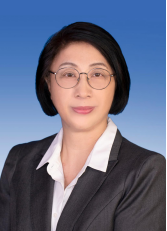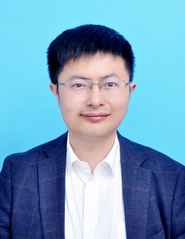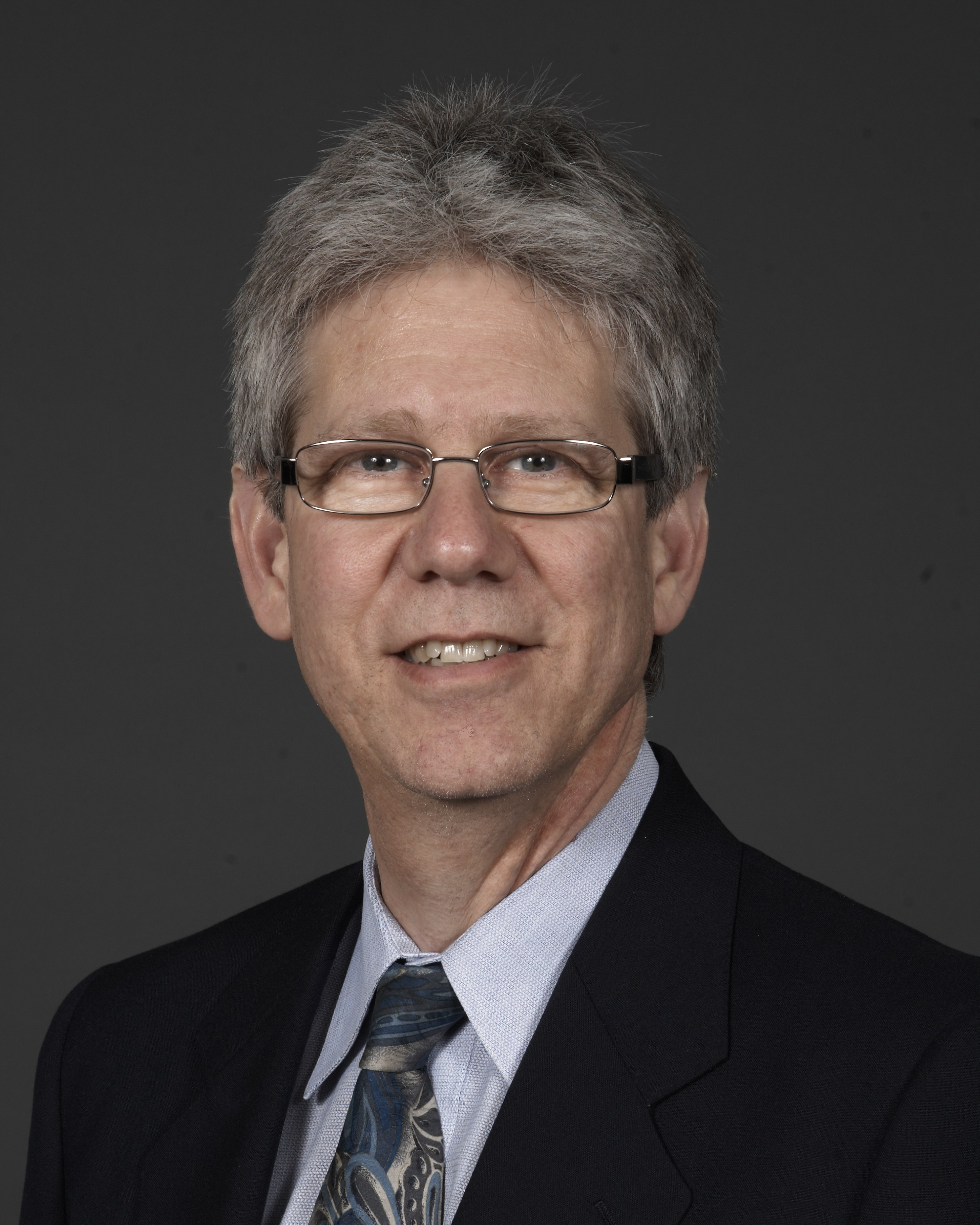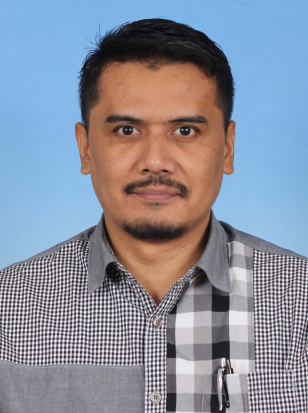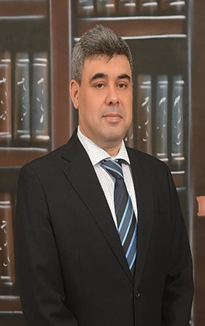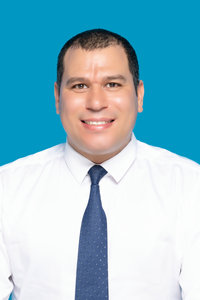
Keynote Speakers - ICAEER 2024
| Prof. Mingyan Gu, Anhui University of Technology, China (Vice President of Anhui University of Technology) Mingyan Gu, a Professor, Doctoral Supervisor, and Vice President at Anhui University of Technology, holds the distinction of being an academic and technological leader in Anhui Province. She serves as the Chairman of the Metallurgical Solid Waste Resource Utilization Committee under the Chinese Society for Metals (CSM), a Member of the Combustion Committee at the Chinese Society of Engineering Thermophysics (CSET), and a Council Member on the 10th Board of Directors of CSM. Professor Gu has a long-standing research focus on the mechanisms and control of combustion-generated pollutants, along with flame organization and structure. Her research portfolio encompasses hydrogen-enriched fuel injection with pure oxygen in blast furnaces, mission characteristics of pollutants from high-temperature regenerative combustion in walking-beam furnaces, efficient combustion with flue gas recirculation in shaft kilns for low NOx emissions, pollutant formation characteristics under O2/CO2 atmosphere combustion, and ultra-low emission control of tail gas pollutants from supercritical CO2 coal-fired boilers. Key areas of emphasis include the pollutant formation characteristics during the mixed combustion of hydrogen-rich coke oven gas and hydrocarbon fuels, the soot characteristics, and NOx interaction in high-temperature flames of ammonia-blended hydrocarbon fuels. Professor Gu has undertaken over ten national key research and development projects, National Natural Science Foundation of China (NSFC) grants, and provincial/ministerial key projects. She has been awarded four provincial/ministerial-level scientific and technological progress prizes. Her contributions are evident in over 100 high-impact publications in international and domestic academic journals, as well as over 30 granted invention patents. Speech Title: Interaction of soot and NOX in high temperature flame of ammonia-doped ethylene combustion Abstract: Ammonia (NH3) as a promising carbon-free fuel has attracted significant attention due to its potential. However, it presents challenges such as high combustion ignition temperature, poor flame stability, and the easy production of high concentrations of NOx. The co-combustion of ammonia with hydrocarbon fuel offers a potential solution to improve combustion characteristics and reduce soot generation; however, it also leads to elevated levels of NOx. This talk presents research findings on the interaction between soot and NOx in high-temperature flames resulting from ammonia-doped ethylene combustion. The distribution of soot concentration under varying ammonia ratios was determined using the extinction light method. The Coflame numerical simulation was applied to obtain the distribution of soot and NOx concentration in high-temperature flames. Additionally, the reduction rates of soot and NOx at different ammonia-nitrogen ratios were obtained in high temperature tube furnace experiments and the reaction path and mechanism between NOx and soot produced in ammonia-doped ethylene flames was employed by Molecular dynamics simulation. |
Prof. Huiyan Zhang, Southeast University, China (Winners of NSF for Distinguished Young Scholars) Zhang Huiyan, professor at Southeast University, recipient of the National Science Fund for Distinguished Young Scholars and the National Science Fund for Excellent Young Scholars, and project leader of a National Key R&D Program. Prof. Zhang is always engaged in theoretical and applied research in the fields of biomass and organic solid waste pyrolysis and gasification, renewable energy-driven conversion, multi-energy collaborative thermal-driven preparation of high-quality liquid fuels, carbon materials, chemicals, and syngas. He has published over 200 papers in journals such as Science、PNAS、Nat. Commun.、Sci. Adv., Energy Environ. Sci., with more than 10,000 SCI citations. For five consecutive years, he has been listed as a Highly Cited Chinese Researcher by Elsevier. He has authored or edited five monographs/textbooks and holds more than 60 authorized national invention patents. He has developed multiple demonstration systems for the high-value utilization of biomass pyrolysis and gasification, which have been successfully commercialized and promoted. In recent years, as the primary contributor, he has received the First Prize in Technological Invention from the Ministry of Education, the Excellent Patent Award of China, the Special Gold Award at the Geneva International Invention Exhibition, and several Young Scientist Awards from top-level academic societies. He serves as the Deputy Editor-in-Chief of New Energy Science and Energy Research and Utilization journals, and is on the editorial board or a guest editor for more than 10 domestic and international academic journals. He is also an executive director of the IEEE International Distributed Energy Subcommittee, a member of the International Consultant Committee on Waste-to-Energy (ICCWtE), a council member of the 9th Board of Directors of the Chinese Society for Environmental Sciences, a member of the Youth Committee and Biomass Committee of the China Renewable Energy Society, the Deputy Chair of the Biomass Coupling Standards Committee of the China Electricity Council, and a Co-chair of the Program Committee for the Annual Conference on Combustion of the Chinese Society of Engineering Thermophysics in 2020 and 2021. Speech Title: Biomass directional conversion into high-quality liquid fuels, carbon materials and syngas Abstract: With the increasing fossil fuel consumption and greenhouse gas emissions, the utilization of carbon-neutral biomass has attracted extensive attention all over the world. Research in this area has spurred the rapid development of biomass fuels and advanced carbon materials, aiming to obtain fuels and satisfy the world’s energetic demands as efficiently as possible. Throughout our long-term research on biomass thermochemical conversion, we identified several key challenges and proposed innovative solutions. Firstly, we designed a bifunctional metal-zeolite catalytic system to address the complex structure of lignin, enabling the pre-activation and selective cleavage of C–C bonds, thereby breaking through the limits of monomer yield. Additionally, we developed a solar-driven biomass photoelectrochemical/photothermal coupling system powered by renewable energy, such as solar energy. This system effectively avoids harsh reaction conditions and excessive heat input, facilitating selective bond cleavage to enhance product specificity—making it one of the most promising development directions. Finally, the technology of synthesizing carbon nanotubes via gas-phase deposition of pyrolysis gases provides a new avenue for producing advanced functional materials, with broad applications in fields such as fuel cells and military technology. The established biomass pyrolysis and gasification demonstration facility provides a crucial platform for large-scale production and technology validation. The breakthroughs achieved in the efficient production of fuels and advanced carbon materials from biomass offer effective pathways to enhance the utilization of biomass and other renewable energy sources, reduce environmental impact, and meet global energy demands. |
|
| Prof. Marc A. Rosen, Ontario Tech University, Canada (Fellow of Canadian Academy of Engineering,h-index:98) Marc A. Rosen is a Professor of Mechanical Engineering at the University of Ontario Institute of Technology in Oshawa, Canada, where he served as founding Dean of the Faculty of Engineering and Applied Science from 2002 to 2008. Dr. Rosen was President of the Engineering Institute of Canada from 2008 to 2010, and President of the Canadian Society for Mechanical Engineering from 2002 to 2004. He is a registered Professional Engineer in Ontario, and has served in many professional capacities, e.g., as a member of the Board of Directors of Oshawa Power and Utilities Corporation. He serves on the editorial boards of several technical journals and as an advisory member of several leading international conferences. With over 70 research grants and contracts and 600 technical publications, Dr. Rosen is an active teacher and researcher in thermodynamics, energy technology (including cogeneration, trigeneration, district energy, thermal storage, renewable energy, and hydrogen technologies), sustainable energy and the environmental impact of energy and industrial systems. Much of his research has been carried out for industry. Dr. Rosen has worked for such organizations as Imatra Power Company in Finland, Argonne National Laboratory near Chicago, and the Institute for Hydrogen Systems near Toronto. He was also a professor in the Department of Mechanical, Aerospace and Industrial Engineering at Ryerson University in Toronto, Canada for 16 years. While there, Dr. Rosen served as department Chair and Director of the School of Aerospace Engineering. Dr. Rosen has received numerous awards and honours, including an Award of Excellence in Research and Technology Development from the Ontario Ministry of Environment and Energy, the Engineering Institute of Canada's Smith Medal for achievement in the development of Canada, and the Canadian Society for Mechanical Engineering's Angus Medal for outstanding contributions to the management and practice of mechanical engineering. He received a distinguished scholar award from Ryerson University and a Mid-Career Award from University of Toronto. He is a Fellow of the Engineering Institute of Canada, the Canadian Academy of Engineering, the Canadian Society for Mechanical Engineering, the American Society of Mechanical Engineers and the International Energy Foundation. Dr. Rosen obtained a B.A.Sc. (1981) in Engineering Science, and a M.A.Sc. (1983) and Ph.D. (1987) in Mechanical Engineering, all from the University of Toronto. Speech Title: Engineering Sustainability: The Case of Electric Cars Abstract: Sustainability is a critically important goal for human activity and development. Sustainability in the area of engineering, in particular, is of great importance to any plans and efforts for overall sustainability. This is due to many factors, including 1) the pervasiveness of engineering activities in societies, 2) their importance in economic development and living standards, and 3) the significant impacts that engineering processes and systems have had, and continue to have, on the environment. But sustainable engineering is extremely complex and challenging. One complex area is transportation, and the development and utilization of electric vehicles. Many factors that need to be considered and appropriately addressed in moving towards engineering sustainability are examined in this presentation. These include appropriate selection of resources bearing in mind sustainability criteria, the use of sustainable engineering processes, enhancement of the efficiency of engineering processes and resource use, and a holistic adoption of environmental stewardship in engineering activities. In addition, other key sustainability measures are addressed, such as economics, equity, land use, lifestyle, sociopolitical factors and population. Finally, the ramifications of the development and utilization of electric cars on sustainability are considered. Conclusions are provided related both to pathways for engineering sustainability and to the broader ultimate objective of sustainability, and the place of electric cars. |
Prof. Ahmad Zuhairi Abdullah, Universiti Sains Malaysia, Malaysia (Fellow of Akademi Sains Malaysia, h-index:64) Research Area: Catalysis, reaction, oleochemical processes, waste treatment & utilization. Professor Dr Ahmad Zuhairi Abdullah received his B. Tech (Hons), MSc, and PhD in 1995, 2000, and 2004, respectively. He was the Deputy Dean (Industry and Community Network) at the School of Chemical Engineering, Universiti Sains Malaysia between 2010-2012 and Deputy Dean (Research and Postgraduate Studies) between 2013-2018. He is also serving his deanship of the school in 2022-2024. He is registered as a Fellow of Akademi Sains Malaysia, a Professional Technologist at Malaysian Board of Technologists (MBOT), a Fellow of Institut Kimia Malaysia (IKM) and a Life member of the Malaysian Oil Scientists and Technologists’ Association (MOSTA). He is regularly appointed as an MBOT accreditation auditor and as a program’s external examiner for many academic programs in several Malaysian universities. His research works mostly involve the use of ordered porous catalytic materials in oleochemical reactions, renewable energy, waste treatment, and waste valorization. He has nearly 300 refereed publications in journals and book/book chapters mainly as the main author, and also involves as a technical committee member of nearly 150 international scientific conferences. He is often invited to share his research experiences at various international conferences held in Malaysia, Laos, Indonesia, Vietnam, Thailand, Pakistan, The Philippines, and PR China. In addition, he is an evaluator for research proposals from different ministries/agencies locally as well as from several international scientific bodies in the EU, USA, Oman, Qatar, Kazakhstan, and Chile. He is also an expert panel of the Department of Environment Malaysia for the evaluation of Environmental Impact Assessment reports for various proposed commercial projects related to petrochemical complexes, heavy oil facility, paper mills, metal smelting, chemical, lead-acid battery recycling plants, etc. He is one of the recipients of the Top Research Scientists Malaysia (TRSM) award in 2014 and was listed in the List of World’s Top 2% Scientists by Stanford University in 2020-2022. His h-index (Scopus) currently stands at 64 with more than 13,000 citations. He is a certified trainer with the Human Resource Development Corp (HRDC) of Malaysia. Speech Title: Oleochemical waste valorization: Glycerol conversion to value-added chemicals using heterogeneous catalytic processes for sustainable industries Abstract: Glycerol, an excess by-product of the oleochemical and biodiesel industries, poses waste disposal challenges but also presents significant opportunities for green solutions. It can be converted into high-value, eco-friendly products through innovative catalytic processes, improving fuel additives' octane ratings and reducing emissions. Research on catalytic methods like etherification and acetylation highlights the need for optimized materials, with mesoporosity being essential for effective reactions. Additionally, glycerol can produce biodegradable polyglycerols and monoglycerides, supporting sustainable practices in various industries. Producing lactic acid and transforming glycerol into acrylic acid offer pathways to biobased chemicals and sustainable polymers. The main challenge remains the development of stable, selective catalysts that enhance yields while minimizing environmental impacts. In summary, glycerol exemplifies the potential for green technology to create a sustainable oleochemical industry, particularly in major vegetable oil-producing countries like Malaysia, where new catalysts are vital for future sustainability. |
|
| Prof. Mohammed JK Bashir, School of Engineering & Technology, Central Queensland University, Australia (h-index:46) Research Area: Sustainable Development, Resource Recovery, Waste management and Technology Dr. Bashir's expertise in Sustainability & Environmental Engineering is underscored by his recent inclusion in the esteemed STANFORD list of the world's top 2% scientists in 2023. Currently serving as Senior Lecturer at Central Queensland University's School of Engineering and Technology, he specializes in resource recovery, sustainable practices, circular economies, emerging contaminants, and advanced water and wastewater treatment technologies. With a career marked by dedicated contributions, Dr. Bashir has impacted academia and international collaboration significantly. His mentorship extends to over 15 PhD and Master's students, while his ability to secure research funding from institutions like the Ministry of Higher Education in Malaysia, the National Science Fund in the USA, and the Rotary Global Grant underscores his influence. His scholarly impact is reflected in over 250 publications in high-impact journals, boasting an h-index of 46 and over 7300 citations. Recognized with over 20 awards, including Best PhD Research Award and teaching commendations, Dr. Bashir continues to shape the field, serving as a guest editor for esteemed journals and cementing his legacy as a leader in the field of Sustainability & Environmental Engineering. Title: Pioneering Sustainable Solid Waste Management: Embracing Circular Economy and Innovative Solutions Abstract:The global surge in municipal solid waste (MSW) production presents urgent environmental challenges, including rising greenhouse gas emissions, overwhelmed landfills, and deteriorating water quality. To tackle these issues effectively, a transformative shift towards sustainable waste management practices is essential. This session will examine the limitations of traditional waste management systems and explore how circular economy principles can offer a revolutionary approach. Key topics will include resource efficiency, organic waste processing, and cutting-edge technologies. For instance, waste-to-energy solutions have significantly reduced landfill dependency by converting waste into valuable energy, while organic MSW composting has enhanced soil health and produced natural fertilizers. The presentation will feature successful case studies and emerging technologies that demonstrate the potential of turning waste—particularly organic MSW—into valuable resources. By adopting these sustainable practices, we can mitigate the negative impacts of waste management on human health and the environment, while improving overall material and energy efficiency. Attendees will gain valuable insights into how circular economy strategies and innovative waste management solutions can drive economic growth, enhance public health, and promote a more sustainable future. |
Prof. El-Sayed Salama, Lanzhou University, China (h-index:43) Research Area: Environmental Science and Technology El-Sayed Salama (Top 2% Scientists Worldwide by Stanford University, USA) is currently a full Professor and the head of the Green Environmental & Energy Laboratory (GEEL) at Public Health School, Lanzhou University (China). He was previously hired as a High-level Foreign Talent Fellow (Category A) at Lanzhou University (China). He was appointed as a Distinguished Expert in Science and Technology in the Ecological Industry of Gansu Province (China). He was previously an Assistant Professor and Post-Doctoral fellow at Hanyang University (HYU). He was a Brain Korea (BK21) fellow for his MSc and PhD degrees at HYU (South Korea). He holds a BSc from the Faculty of Science at Benha University (Egypt). Prof. Salama and his research team have potential contributions to the scientific society (>130 SCI papers, 7 patents, 3 books, 4 book chapters, 1 technology transfer, and 50 invited talks). His publications (with an H-index of 43 and >5000 citations) appeared in top-tier journals such as Progress in Energy & Combustion Science (IF= 32, Q1), Trends in Plant Science (IF= 17.3, Q1), Renewable & Sustainable Energy Reviews (IF= 16.3, Q1), Trends in Microbiology (IF=14, Q1), Chemical Engineering Journal (IF= 13.3, Q1), Resources, Conservation and Recycling (IF= 11.2, Q1), Journal of Energy Chemistry (IF= 14, Q1), and Water Research (IF= 1.41, Q1). He graduated 15 students (8 Ph.D. and 9 masters) till now. He is a member of the “Gansu Society of Microbiology” (China). He is acting as an editor, associate editor, and editorial board member of several international journals. He is also appointed as general chair, session chair, and international committee member of international conferences. His research at LZU focuses on bioenvironmental sciences and bioenergy. Speech Title: Opportunities and Challenges in Bioenergy Generation from Biowastes Abstract: Biowastes could be convertible to biofuels in the form of gaseous fuel (i.e., biogas/biomethane) through anaerobic digestion (AD) and liquid fuel (i.e., biodiesel and bioethanol) by transesterification and fermentation, respectively. Microbial fuel cells (MFCs) are also a potential technology to convert these biowastes to bioelectricity. However, there are still some challenges to maximizing the energy recovery from these EBs. Toxic effects of long-chain fatty acids (LCFAs), high concentration of recalcitrant lignin, and ammonia accumulation are the major hurdles during energy recovery from lipids (waste oils), carbohydrates (lignocellulosic biomass), and protein (slaughterhouse and seafood), respectively. Our research is focused to address these challenges and maximize the energy recovery from EBs. The effect of different fat, oil, and grease (FOG) loading (0.1-3% v/v) on the AD microbes was systematically studied. Optimum biomethane production was observed at 1-1.5% FOG. The addition of either 2 or 3% FOG permanently inhibited biomethane production due to the coating of microbes by FOG/LCFAs [1]. To overcome the inhibition by LCFAs, various calcium concentrations (0.1-1% w/v) were applied to explore the optimum calcium level that can decrease the toxicity of 2% FOG and boost biomethane production. The optimum calcium concentration (0.5%) showed maximum COD removal and biomethane production and was associated with the dominance of the phyla Bacteroidetes, Firmicutes, Proteobacteria, Chloroflexi, and Euryarchaeota which are actively involved in the conversion of LCFAs to biomethane [2]. The addition of walnut shell biochar resulted in the enhancement of biogas production by 38.26-87.55%. Low-density polyethylene (LDPET) and high-density polyethylene (HDPET) were used as support materials for biofilm formation during anaerobic co-digestion of agricultural wastes. The HDPET was found to accelerate biofilm formation during the co-digestion of agricultural wastes [3]. The optimum range for iron oxide nanoparticles (IONPs) addition (40-60 mg L-1) enhanced VWs digestion and improved biomethane production (>79%) [4]. In co-digestion, shrimp chaff (as protein-rich waste) enhanced the biomethane production of corn straw by 8.47-folds [5]. Biodiesel production from edible sources has several socio-economic impacts such as food security and cost issues. Waste cooking oils (WCOs) can be used as an alternative feedstock due to their large production. Six WCOs including chicken oil (CO), fat, oil, and grease (FOG), beef hotpot oil (BHP), mixed waste cooking oil (MWO), duck oil (DO), and vegetable hotpot oil (VHP) were assessed for their potential applications in the current study. The lipid content of all WCOs ranged from 73-84.5% with the highest C16/C18 (32.1-71.4%) in DO and VHP, respectively. The highest MUFAs (59%) such as oleic acid are found in VHP making VHP highly recommended for biodiesel production, as its derived biodiesel complies with international standards. Bioethanol production as a liquid biofuel was boosted from pretreated cotton stalk lignocellulosic biomass through the co-fermentation of immobilized yeasts [6]. Application of strategies such as calcium, biochar, and biofilm carrier's addition, co‐digestion, essential nutrients supplement, and co-fermentation along immobilization could be the potential approaches for improved energy recovery from bio(mass)wastes. |
|
